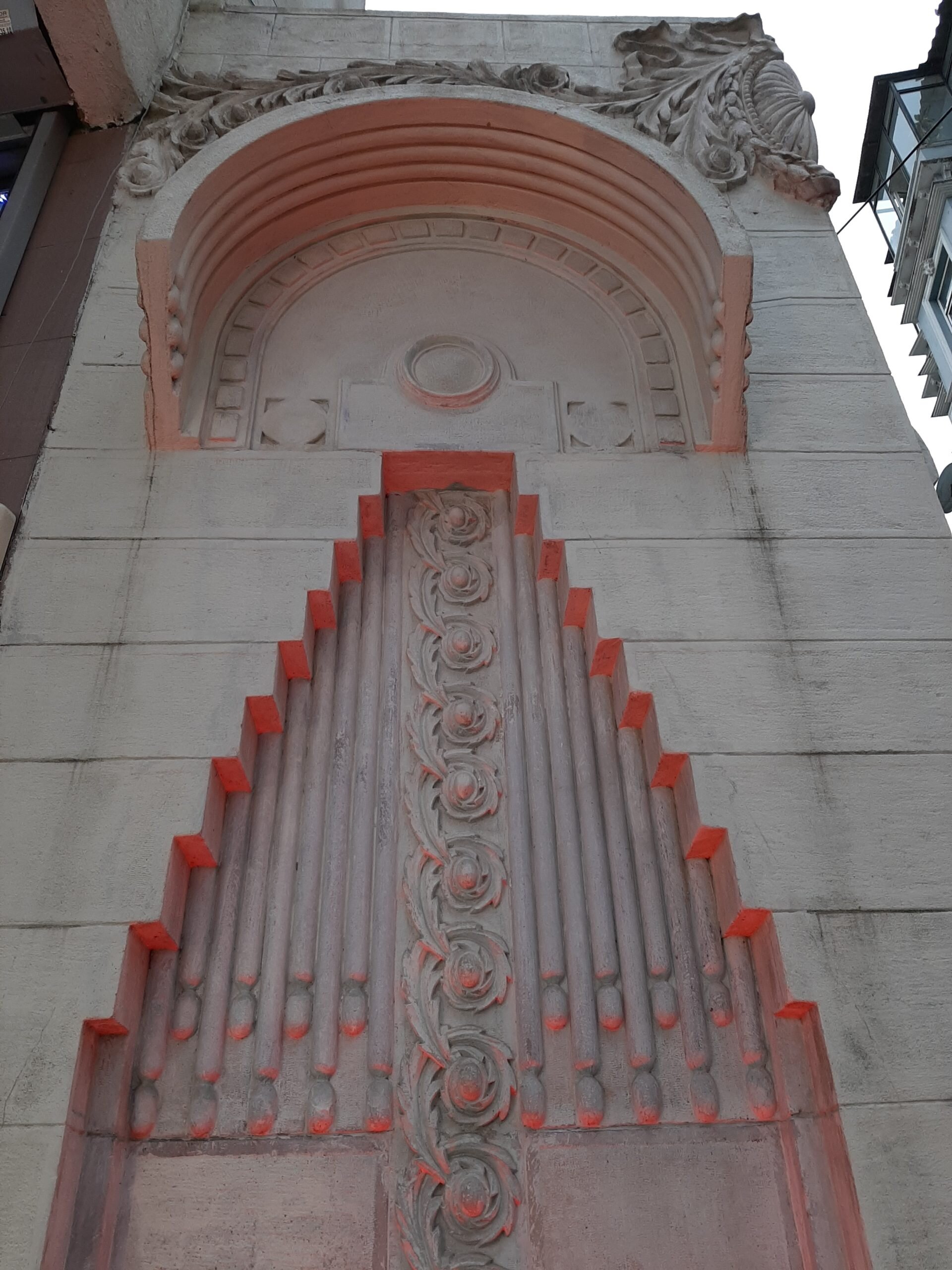Just before the December rains set in, I took advantage of Istanbul’s blue sunny skies to go exploring. My aim was to find works by Raimondo D’Aronco, an Italian architect responsible for bringing Art Nouveau architecture to the city. D’Aronco was born in Gemona del Friuli (by coincidence part of the district where my husband’s family comes from in Northern Italy) in 1857. After leaving primary school, D’Aronco went to a local Arts and Crafts School for two years before being apprenticed to a master builder. Then he was sent to Venice to study Ornamental Design and Architecture at the Academy of Fine Arts. After graduating, he started working and entering architectural competitions where his original and imaginative designs met with considerable success.
In 1893 Sultan Abdülhamid II of Turkey requested the Italian government provide an architect to design an exhibition to mark his 20 years of rule. A devastating earthquake in 1894 put an end to the project but D’Aronco stayed and oversaw inspections and repairs to damaged buildings. As the first ever foreign born palace architect Raimondo D’Aronco was also charged with remodelling part of Yıldız Saray, the sultan’s private residence.
He worked alongside Sarkis Balyan, a member of the famous Armenian family that built Dolmabahçe Palace. While the Balyans specialised in monumental grandeur, D’Aronco used Rococo exuberance combined with experimental Art Nouveau. This early work allowed him to explore ways to articulate Art Nouveau motifs together with Ottoman sensibilities and come up with unique and beautiful designs.
One of them is Seyh Muhammed Zafir Türbe, a tomb built for religious leader Seyh Zafir, as part of a small complex also containing a fountain and library. It’s just up Barbaros Bulvarı, overlooked by Ertuğrul Tekke Camii. When I arrived, the elegant lines of the bars protecting the windows were obscured by an enormous ATV chained to them. Ignoring it, I studied the tomb from all sides, admiring the way D’Aronco had combined Jugenstil (German and Austrian Art Nouveau) rectilinear form with the late-Ottoman focus on small fanciful landmarks. As I crouched awkwardly trying to get a shot sans ATV, the tea man at the stand next door (really just an open tent fashioned from tarpaulin and decorated with
leafy vines) approached and offered to move it so I could take better photos. I was delighted and tried to help but discovered I could barely lift the chain, let alone move it. After I’d taken all the shots I wanted and he’d rolled the ATV back in place we started to chat. He told me has four children, two girls and two boys. The daughters are both married and one son, currently doing his military service, is engaged. To date he has two grandchildren but I have no doubt there will be more soon. He was very curious to know why I lived in Turkey and when I told him what I loved about living here he happily agreed. He let me take his photo as a memento after I promised not to share it on social media. Declining his offer of tea, I caught a bus up the top of the steep hill and went in search of my next address.
I was looking for ex-Imperial Stables built by D’Arcono, supposedly located on Palanga Caddesi. Lovely leafy trees line this long winding street where almost every property is owned by the army or the government. Consequently it’s completely empty of street vendors and parked cars, making it a rarity in Istanbul. I couldn’t locate the stables but I did manage to chat with the security guard at Yıldız Şale (Yıldız Chalet). The chalet itself is being completely restored and isn’t open to the public at the moment. However, the guard told me there are other D’Aronco buildings in the complex, but he wasn’t allowed to let me in. Oh well, I’ll just have to wait for news of its reopening.
Back down on Çırağan Caddesi, I caught a bus to Karaköy and then headed up Şair Ziya Paşa Caddesi, in search of a fountain designed by Raimondo D’Aronco . I found it being used as a very smart piece of advertising for a shop selling lights and other electrical paraphernalia. I couldn’t decide which colour version I like best so decided to post all three. Which one’s your favourite?
Raimondo D’Aronco was prolific with his ideas but sadly many of his projects were never realised and exist only on paper. Of those that were built, the magnificent Botter House at 235 Istiklal Caddesi now stands forlorn and neglected, largely hidden behind corrugated iron sheeting. It was built in 1900-1901 for Jean Botter, a Dutchman who worked as the Sultan’s tailor. Originally the ground floor housed his atelier and showroom, while the upper floors contained private apartments. It’s still possible to catch sight of the lively wrought iron balustrades, floral motifs and Art Nouveau window frames and doors. Hopefully one day soon someone will come along and restore it to its former glory.
After Sultan Abdülhamid II was deposed in 1909, D’Aronco returned to Italy and died in 1932. He was a humble man who avoided the limelight, never granting a press interview or boasting of his achievements. Luckily for us he left behind a small but perfect architectural legacy – a fitting testimony to this extremely talented individual.
*
Lisa Morrow is a Sydney, Australia-born sociologist, travel and opinion essay writer who lives in Istanbul, Turkey. Her work has appeared or is forthcoming in BBC Travel, Public Radio International, English Kills, The Independent UK, Al-Monitor, The Smart Set, Hyperallergic, Aljazeera, New York Times Travel, Meanjin, The Laurel Review and elsewhere. She also runs www.insideoutinistanbul.com, the result of her determination to scratch away the seemingly mundane surface of ordinary Turkish life to reveal the complexities below.





